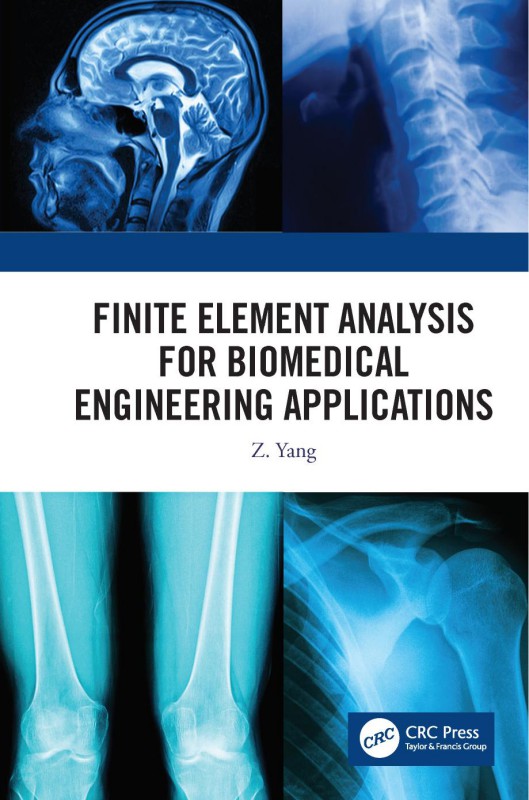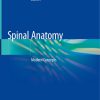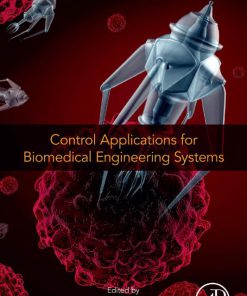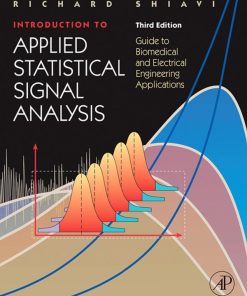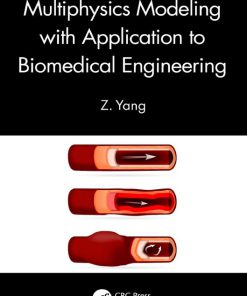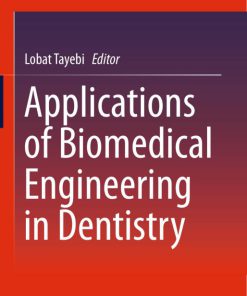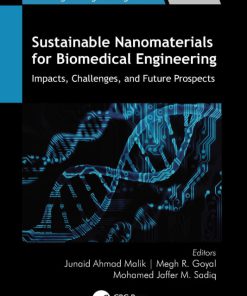(Ebook PDF) Finite Element Analysis for Biomedical Engineering Applications 1st edition by Yang 0429590210 9780429590214 full chapters
$50.00 Original price was: $50.00.$25.00Current price is: $25.00.
Authors:Z. Yang , Series:Biomedical [126] , Author sort:Yang, Z. , Languages:Languages:eng , Published:Published:Feb 2019 , Publisher:CRC Press
Finite Element Analysis for Biomedical Engineering Applications 1st edition by Z. Yang – Ebook PDF Instant Download/DeliveryISBN: 0429590210, 9780429590214
Full download Finite Element Analysis for Biomedical Engineering Applications 1st edition after payment.
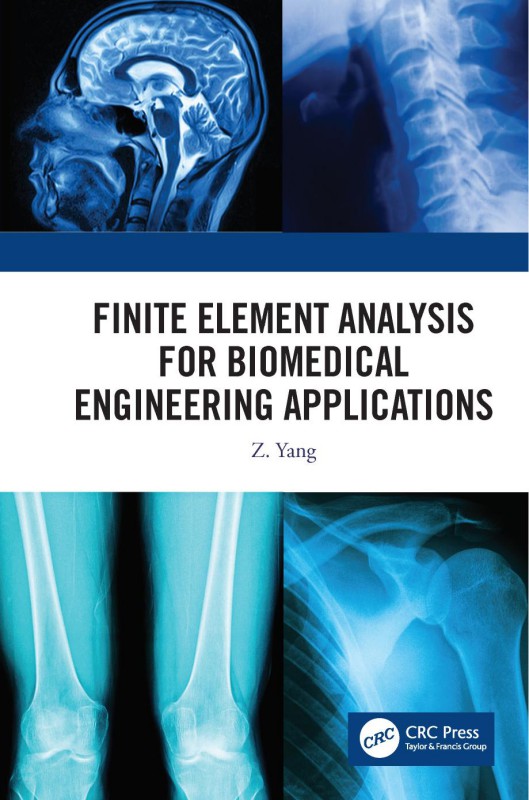
Product details:
ISBN-10 : 0429590210
ISBN-13 : 9780429590214
Author : Z. Yang
Finite element analysis has been widely applied to study biomedical problems. This book aims to simulate some common medical problems using finite element advanced technologies, which establish a base for medical researchers to conduct further investigations. This book consists of four main parts: (1) bone, (2) soft tissues, (3) joints, and (4) implants.
Finite Element Analysis for Biomedical Engineering Applications 1st Table of contents:
Chapter 1: Introduction
Part I: Bone
Chapter 2: Bone Structure and Material Properties
2.1 Bone Structure
2.2 Material Properties of Bone
References
Chapter 3: Simulation of Nonhomogeneous Bone
3.1 Building Bone Model from CT Data
3.1.1 CT Data
3.1.2 Finite Element Model
3.1.3 Calculation of the Average CT Number (HU)
3.1.4 Material Property Assignment
3.1.5 Discussion
3.1.6 Summary
3.2 Interpolation of Bone Material Properties
3.2.1 Multidimensional Interpolation
3.2.1.1 RBAS Algorithm
3.2.1.2 NNEI Algorithm
3.2.1.3 LMUL Algorithm
3.2.2 Interpolation of Material Properties of the Ankle
3.2.2.1 Defining Material Properties of Bone Using the RBAS Algorithm
3.2.2.2 Defining Material Properties of Bone Using the NNEI Algorithm
3.2.2.3 Defining Material Properties of Bone Using the LMUL Algorithm
3.2.2.4 Defining Material Properties of Bone Using a Mixed Method
3.2.3 Discussion
3.2.4 Summary
References
Chapter 4: Simulation of Anisotropic Bone
4.1 Anisotropic Material Models
4.2 Finite Element Model of Femur with Anisotropic Materials
4.2.1 Finite Element Model of Femur with Anisotropic Materials
4.2.2 Simulation of Mechanical Testing of the Femur
4.2.3 Discussion
4.2.4 Summary
References
Chapter 5: Simulation of Crack Growth Using the eXtended Finite Element Method (XFEM)
5.1 Introduction to XFEM
5.1.1 Singularity-Based Method
5.1.2 Phantom-Node Method
5.1.3 General Process for Performing XFEM Crack-Growth Simulation
5.2 Simulation of Crack Growth of the Cortical Bone
5.2.1 Finite Element Model
5.2.1.1 Geometry and Mesh
5.2.1.2 Material Properties
5.2.1.3 Definition of Crack Front
5.2.1.4 Local Coordinate Systems
5.2.1.5 Loading and Boundary Conditions
5.2.1.6 Solution Setting
5.2.2 Results
5.2.3 Discussion
5.2.4 Summary
References
Part II: Soft Tissues
Chapter 6: Structure and Material Properties of Soft Tissues
6.1 Cartilage
6.1.1 Structure of Cartilage
6.1.2 Material Properties of Cartilage
6.2 Ligaments
6.2.1 Structure of Ligaments
6.2.2 Material Properties of Ligaments
6.3 Intervertebral Disc
References
Chapter 7: Nonlinear Behavior of Soft Tissues
7.1 Hyperelastic Models
7.2 Finite Element Analysis of the Abdominal Aortic Aneurysm Wall
7.2.1 Finite Element Model
7.2.1.1 Geometry and Mesh
7.2.1.2 Material Model
7.2.1.3 Loading and Boundary Conditions
7.2.1.4 Solution Setting
7.2.2 Results
7.2.3 Discussion
7.2.4 Summary
References
Chapter 8: Viscoelasticity of Soft Tissues
8.1 The Maxwell Model
8.2 Study of PDL Creep
8.2.1 Finite Element Model
8.2.1.1 Geometry and Mesh
8.2.1.2 Material Models
8.2.1.3 Boundary Conditions
8.2.1.4 Loading Steps
8.2.2 Results
8.2.3 Discussion
8.2.4 Summary
References
Chapter 9: Fiber Enhancement
9.1 Standard Fiber Enhancement
9.1.1 Introduction of Standard Fiber Enhancement
9.1.2 IVD Model with Fiber Enhancement
9.1.2.1 Finite Element Model of IVD
9.1.2.2 Results
9.1.2.3 Discussion
9.1.2.4 Summary
9.2 Mesh-Independent Fiber Enhancement
9.2.1 Introduction of Mesh-Independent Fiber Enhancement
9.2.2 IVD Model with Mesh-Independent Fiber Enhancement
9.2.2.1 Finite Element Model
9.2.2.2 Creating the Fibers
9.2.2.3 Results
9.2.2.4 Summary
9.3 Material Models Including Fiber Enhancement
9.3.1 Anisotropic Material Model with Fiber Enhancement
9.3.2 Simulation of Anterior Cruciate Ligament (ACL)
9.3.2.1 Finite Element Model
9.3.2.2 Results
9.3.2.3 Discussion
9.3.2.4 Summary
References
Chapter 10: USERMAT for Simulation of Soft Tissues
10.1 Introduction of Subroutine UserHyper
10.2 Simulation of AAA Using UserHyper
10.2.1 Using Subroutine UserHyper to Simulate Soft Tissues of the Artery
10.2.2 Validation
10.2.3 Study the AAA Using UserHyper
10.2.4 Discussion
10.2.5 Summary
References
Chapter 11: Modeling Soft Tissues as Porous Media
11.1 CPT Elements
11.2 Study of Head Impact
11.2.1 Finite Element Model of the Head
11.2.1.1 Geometry and Mesh
11.2.1.2 Material Properties
11.2.1.3 Loading and Boundary Conditions
11.2.2 Results
11.2.3 Discussion
11.2.4 Summary
11.3 Simulation of Creep Behavior of the IVD
11.3.1 Finite Element Method
11.3.1.1 Geometry and Mesh
11.3.1.2 Material Properties
11.3.1.3 Loading and Boundary Conditions
11.3.1.4 Solution Setting
11.3.2 Results
11.3.3 Discussion
11.3.4 Summary
References
Part III: Joints
Chapter 12: Structure and Function of Joints
References
Chapter 13: Modeling Contact
13.1 Contact Models
13.2 3D Knee Contact Model
13.2.1 Finite Element Model
13.2.1.1 Geometry and Mesh
13.2.1.2 Material Properties
13.2.1.3 Contact Pairs
13.2.1.4 Boundary Conditions
13.2.2 Results
13.2.3 Discussion
13.2.4 Summary
13.3 2D Poroelastic Model of Knee
13.3.1 Finite Element Model
13.3.1.1 Geometry and Mesh
13.3.1.2 Material Properties
13.3.1.3 Contact Definitions
13.3.1.4 Boundary Conditions and Loading
13.3.1.5 Solution Setting
13.3.2 Results
13.3.3 Discussion
13.3.4 Summary
References
Chapter 14: Application of the Discrete Element Method for Study of the Knee Joint
14.1 Introduction of Discrete Element Method
14.2 Finite Element Model
14.2.1 Line-Plane Intersection
14.2.2 Building Springs
14.2.3 Boundary Conditions
14.2.4 Results
14.2.5 Discussion
14.2.6 Summary
References
Part IV: Simulation of Implants
Chapter 15: Study of Contact in Ankle Replacement
15.1 Finite Element Model
15.1.1 Geometry and Mesh
15.1.2 Material Properties
15.1.3 Contact Definition
15.1.4 Loading and Boundary Conditions
15.2 Results
15.3 Discussion
15.4 Summary
References
Chapter 16: Simulation of Shape Memory Alloy (SMA) Cardiovascular Stent
16.1 SMA Models
16.1.1 SMA Model for Superelasticity
16.1.2 SMA Model with Shape Memory Effort
16.2 Simulation of Angioplasty with Vascular Stenting
16.2.1 Finite Element Model
16.2.1.1 Geometry and Mesh
16.2.1.2 Material Properties
16.2.1.3 Contact Pairs
16.2.1.4 Solution Setting
16.2.2 Results
16.2.3 Discussion
16.2.4 Summary
References
Chapter 17: Wear Model of Liner in Hip Replacement
17.1 Wear Simulation
17.1.1 Archard Wear Model
17.1.2 Improving Mesh Quality during Wear
17.2 Simulating Wear of Liner in Hip Replacement
17.2.1 Finite Element Method
17.2.1.1 Geometry and Mesh
17.2.1.2 Material Properties
17.2.1.3 Wear Model
17.2.1.4 Contact Definition
17.2.1.5 Loading and Boundary Conditions
17.2.1.6 Solution Setting
17.2.2 Results
17.2.3 Discussion
17.2.4 Summary
References
Chapter 18: Fatigue Analysis of a Mini Dental Implant (MDI)
18.1 SMART Crack-Growth Technology
18.2 Study of Fatigue Life of an MDI
18.2.1 Finite Element Model
18.2.1.1 Geometry and Mesh
18.2.1.2 Material Properties
18.2.1.3 Loading and Boundary Conditions
18.2.1.4 Setting up Fracture Calculation
18.2.2 Results
18.2.3 Discussion
18.2.4 Summary
References
Part V: Retrospective
Chapter 19: Retrospective
19.1 Principles for Modeling Biology
19.2 Meshing Sensitivity
19.3 Units
19.4 Workbench
19.5 ANSYS Versions
People also search for Finite Element Analysis for Biomedical Engineering Applications 1st:
finite-element analysis
biomedical finite element analysis
finite element analysis for beginners
finite element analysis for dummies
finite element analysis bone

